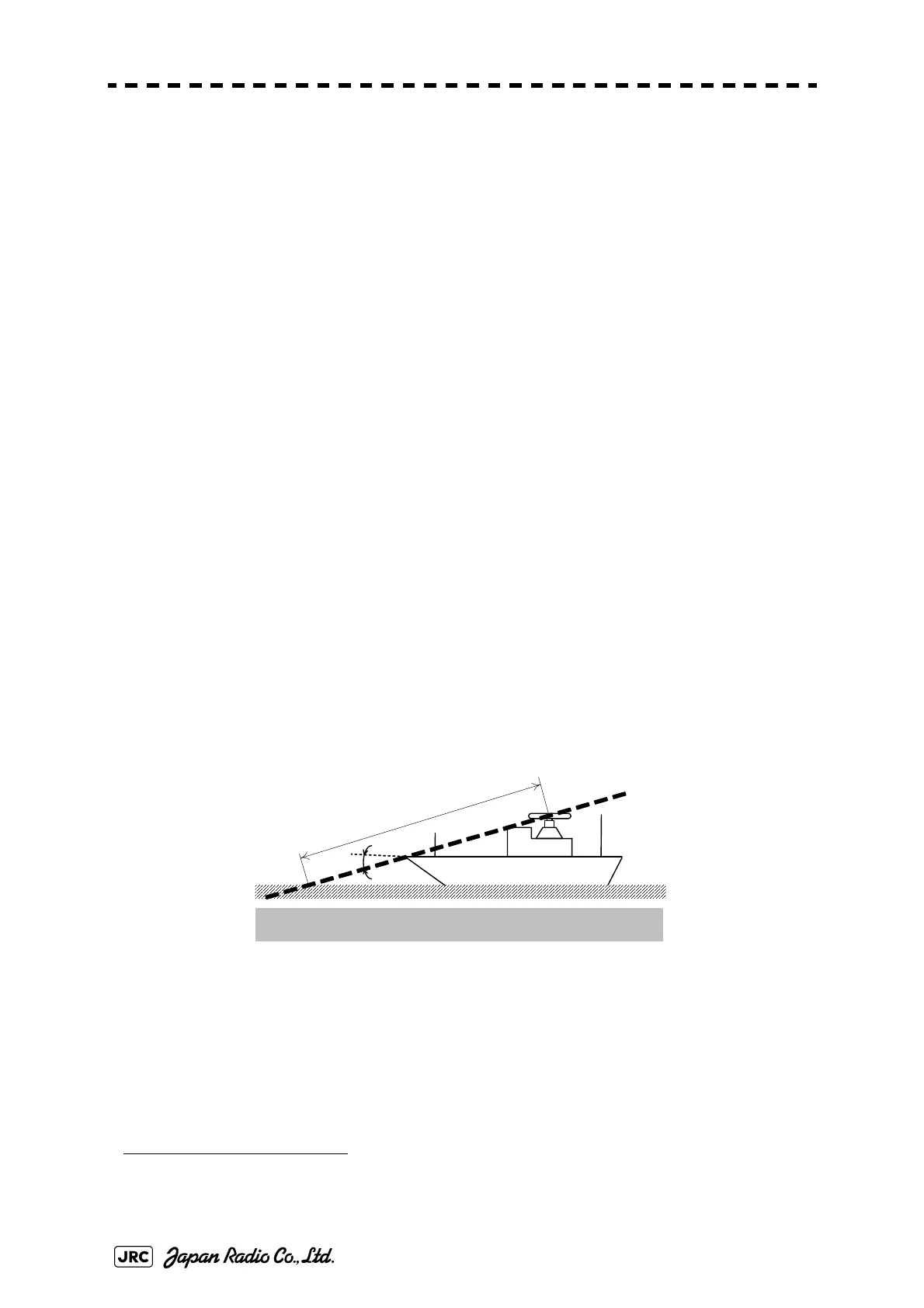2-32
JMA-9100/7100 Installation Manual > 2.INSTALLATION OF SCANNER UNIT > 2.4 PRECAUTIONS
• Avoid having a rope or signal flag from winding around the radiating section thereby
preventing it from rotating.
• Avoid the effects of dust and heat caused by smoke from a chimney.
• When determining the appropriate scanner height and installation location, take into
consideration the reduction of vibration, the strength of the hull and the scanner mount
base, and maintenance properties.
• Provide for maintenance space: platform, safety link, hand rail, steps, etc. The lower
edge of a radar antenna should be a minimum of 500 mm above any safety rail.
• When installing the scanner, select a location where there are the fewest structural
objects in the surrounding area so that the capability to drive the motor will not be
depressed by the non-equability wind which is likely to rotate the scanner.
2) Electrical selection criteria
• The installation height of the scanner relates to the maximum detection distance
1
. The
higher, the better. However, if it is too high, radio wave energy greatly attenuates above
the scanner's vertical beam width (the point -3dB from the peak of the main lobe). As a
result, it is difficult to detect a close-in target. Sea clutter also increases. Determine the
installation height by taking into consideration the weight, maximum length of the
cable, and maintenance after installation.
• If the installation height of the scanner is low, it is difficult to detect a long distance
target. The ship's mast, derrick, and chimney interfere with radiating beam causing the
range that cannot be viewed on the radar display to increase.
Generally, the lowest scanner installation position is supposed to be on the A-B line shown in
Fig 2-23.
In the case of the JMA-7110/7122/7123/9110/9122/9123 type radar, 2 equals 20 .
In the case of the JMA-7132/7133/9132/9133 type radar, 2 equals 25 . Specifically, the scanner
position is normally elevated so that the chimney and the shrine-gate type mast do not interfere
with radiating beam.
The A-B line, or
L line of sight from the radar antenna to the bow of the ship should hit the
surface of the sea in not more than 500 m or twice the ship length, depending which value is
smaller, for all load and trim conditions.
Fig 2-23: Lowest scanner installation height
• If it is considered that sufficient installation height cannot be provided when the scanner
is installed directly on the roof of the wheelhouse, use a mounting rack or radar mast
(Fig 2-24). Normally, when the scanner installation height is less than 2 meters from
the roof of the wheelhouse, provide a mounting rack assembled at an angle frame to
install the scanner. When the scanner installation height is 2 meters or higher from the
roof of the wheelhouse, provide a cylindrical radar mast to install the scanner. Consider
1.For more detail on THE MAXIMUM DETECTION DISTANCE, refer to the instruc-
tion manual chapter 6.
A
B
θ
JMA-7110 / 7122 / 7123 / 9110 / 9122 / 9123 :θ=10°
JMA-7132 / 7133 / 9132 / 9133 :θ=12.5°
L
